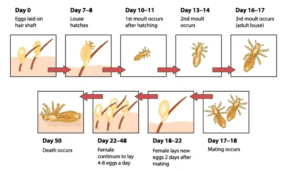Communicable diseases
Communicable diseases
Communicable (infectious and parasitic) diseases:
It is the body’s reaction to the multiplication of a pathogen that is dangerous to it in the body and/or the release of toxins, as manifested by clinical symptoms
- The unique characteristics of infectious diseases:
- the ability to spread in the community,
- Measures are in place to prevent spread (preventive measures and actions).
- Infectious diseases can be caused by:
- bacteria,
- viruses,
- fungi,
- worms.
Routes of infection:
- Airborne (through the respiratory tract, coughing, sneezing).
- Influenza, tuberculosis, chickenpox, rubella, measles, legionellosis.
- Alimentary (food, water, unwashed, dirty hands).
- Salmonellosis, dysentery, typhoid fever, rotavirus infection, perchiosis, yersiniasis, hepatitis A, helminthiasis.
- Contact (skin and mucous membranes, blood).
- Sexually transmitted diseases, fungal diseases, scabies, hepatitis B, C, intravenous drugs.
- Transmission (via vectors).
- Tick-borne encephalitis, borreliosis.
Epidemic process:
- SOURCE AND CONTRIBUTOR OF INFECTION (the sick person or animal carrying the infection).
- PATH OF TRANSMISSION (mechanism through air, food, water, contact, blood or other liquid body fluids).
- IMMI PUBLIC (an organism in which the pathogen can multiply and cause disease).
The chain of transmission and prevention:
To stop the spread of infection, we need to block one or more parts of the chain of transmission.
Infectious diseases of the respiratory tract:
- Respiratory diseases (flu, runny nose, strep throat, etc.) are usually spread through the air.
- The air exhaled by a sick person, especially when sneezing or coughing, is full of viruses and bacteria. One sneeze or cough is enough to infect a whole group).
- This is why these diseases spread particularly rapidly in collectives, where one person can infect many others at once.
Prevention:
-
- avoid close contact with sick people,
- distinguish between sick and healthy people,
- not to use shared items,
- Ventilate well and clean the rooms regularly,
Infectious diseases of the intestine:
- These diseases are most often contracted by drinking contaminated water or eating food that has been contaminated.
- Worm eggs are most often introduced into the intestine by eating poorly washed fruit or vegetables.
- Do not wash your hands before eating.
Prevention:
- Hand hygiene – washing hands with soap removes up to 95% of bacteria and viruses that are pathogenic to humans.
- For the prevention of these infections in groups of young children, it is essential that only healthy children join the group.
Invasive, parasitic and fungal diseases:
- Scabies is a parasitic skin disease caused by the scabies mite. It is contracted through direct contact with the patient or through his/her belongings, as well as through sexual intercourse.
- Fungal infectious diseases are diseases of the skin and skin appendages (nails, hair) caused by various pathological fungi.
- Pediculosis (lice infestation) is an infection with lice.
- All types of lice feed on human blood and lay eggs (glands), which they attach to hair close to the skin.
- Lice infections are contracted through prolonged direct contact with people with lice (in children’s groups, in crowded transport).
- It is most commonly spread by direct head-to-head contact or through combs, hairbrushes, other hair care products, and the exchange and sharing of headgear.
- Children should not share combs, hairbrushes, other hair care items, headgear and clothing;
- Headgear should be kept in the sleeve of the coat, which is stored separately in the rack;
- Sports mattresses and head protection devices (helmets) must be cleaned (vacuumed) after each use;
- Carpets should be vacuumed daily.
Destruction of shelters:
- Lice-killing drugs (pediculicides) are used only after lice have been diagnosed.
- The medication is taken twice with a 7-day break, unless otherwise stated in the instructions for use.
- After 2-3 days of taking the medication, the hair should be carefully combed with a dense comb.
- If live lice are observed after scalp treatment with the product, it is necessary to repeat the procedure with a different product.

The importance of vaccines:
- In addition to the microbe, susceptibility (susceptibility to disease) and environmental conditions, which can favour or inhibit an organism’s resistance to infection, are important factors in the pathogenesis of infectious diseases.
- Only a susceptible organism can get sick after infection. For some infections (influenza, measles), susceptibility can be universal, and almost everyone who is infected will be affected.
- Specific immunity is an acquired resistance to a particular infection. It occurs when a person contracts a disease or receives a prophylactic vaccine.
- Vaccines are any drugs that, when given, make the body actively immune to an infectious disease.
- Vaccines are one of the most effective and safest forms of communicable disease control
- As part of the National Immunisation Programme, the State finances vaccinations against ten infectious diseases, most of which are spread by airborne droplets.
- These include tuberculosis, diphtheria, measles, rubella, epidemic parotitis, whooping cough, hepatitis B, haemophilus influenzae and others.


